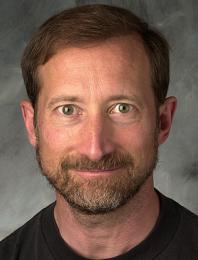 BY NATASHA BARSOTTI — For those of us who are intrigued about what makes people gay, US News & World Report says a new study suggests that homosexuals get the trait from their opposite-sex parents.
BY NATASHA BARSOTTI — For those of us who are intrigued about what makes people gay, US News & World Report says a new study suggests that homosexuals get the trait from their opposite-sex parents. ![]()
That is to say, a lesbian will usually acquire the trait from her father, while a gay man will get the trait from his mother, the report notes.
It’s not a strictly genetic link, according to scientists from the National Institute for Mathematical and Biological Synthesis. Instead, they say, it’s epigenetic.
The study’s lead author, evolutionary biologist William Rice, says homosexuality is linked to epi-marks, “extra layers of information that control how certain genes are expressed” and are usually, but not always, “erased” between generations. According to Rice, these epi-marks are not erased in homosexuals and are passed from father to daughter or mother to son.
If solely a genetic trait, homosexuality would eventually disappear because homosexuals “wouldn’t be expected to reproduce.” Epi-marks give an evolutionary advantage to parents of homosexuals, Rice continues, protecting “fathers of homosexuals from underexposure to testosterone and mothers of homosexuals from overexposure to testosterone while they are in gestation.”
When the epi-marks carry over to opposite-sex children, it can lead to the masculinization of females and the feminization of males, he says, but he adds that only strong epi-marks will result in homosexual offspring.
Most mainstream biologists have “shied away” from studying why people are gay because of the social stigma, Rice told US News. “It’s been swept under the rug; people are still stuck on this idea that it’s unnatural. Well there are many examples of homosexuality in nature; it’s very common,” he oberves, noting that homosexual behaviour has been observed in black swans, penguins, sheep and other animals.
Rice says the model needs to be verified and has to be tested on parent-offspring pairs.
“We predict where the epi-marks occur; we just need other studies to look at it empirically. This can be tested and proven within six months. It’s easy to test. If it’s a bad idea, we can throw it away in short order,” he says.
Landing image: Department of Ecology Evolution and Marine Biology, University of California, Santa Barbara

 Why you can trust Xtra
Why you can trust Xtra


